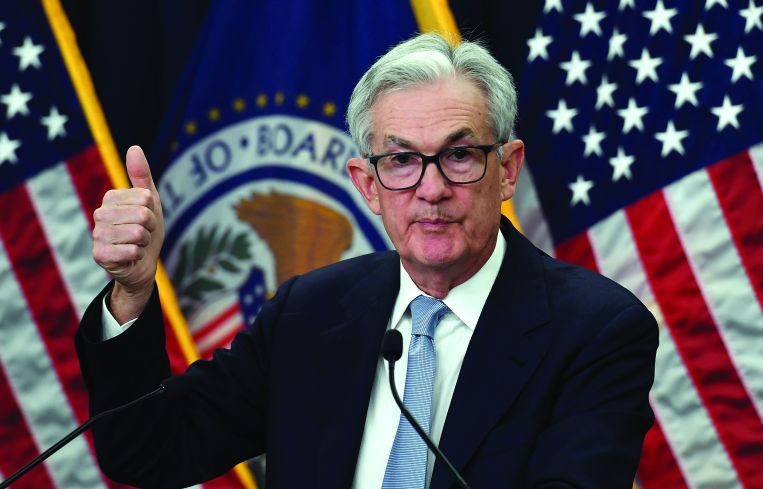Fed’s Interest Rate Hike Pause Gets Commercial Real Estate Excited About 2024
Cheaper borrowing costs could unleash a wave of dealmaking in the new year.
By Andrew Coen December 29, 2023 6:00 am
reprints
Christmas came early for the commercial real estate industry on Dec. 13. That’s when the Federal Reserve signaled its hawkish strategy of fighting inflation with higher interest rates was likely finished, and that lower interest rates are in store for 2024.
The central bank as expected kept its benchmark interest rate unchanged at between 5.25 percent and 5.5 percent for a third straight meeting. But it was its post-meeting statement forecasting three cuts in 2024 — up from one cut predicted in the previous meeting — that was the welcome gift to the commercial real estate market.
“It was a bit of an early holiday gift, and I was pleasantly surprised to see the implications of the projections indicating three rate cuts,” said Xander Snyder, senior commercial real estate economist at First American Financial Corporation. “The prospect of rate cuts has been a little bit of a shot in the arm for the commercial real estate industry. That doesn’t mean there won’t be trouble next year, but it’s a good sign.”
Fed Chairman Jerome Powell said in his post-meeting press conference that committee members view a “reasonable” federal funds rate level of 4.6 percent at the end of 2024, 3.6 percent in late 2025 and 2.9 percent at year end 2026 based on current economic conditions. Powell had previously hiked interest rates in 11 of 12 meetings from March 2022 to July 2023 to their highest levels in 22 years, which was a stark contrast from the near-zero level that previously dominated borrowing since the economic collapse of 2008.
Christopher Peck, senior managing director and co-head of the New York office at JLL Capital Markets, said the Fed’s more dovish stance to end 2023 could expedite more transaction activity earlier in 2024 than previously expected. In late 2023, prior to the Fed’s December meeting, there was already some heavy trading activity involving New York City properties. Peck said that was due to signs that interest rates would be leveling off.
“There are a couple very significant platform trades that have hit the market at multibillion-dollar trades, and those don’t clear in a rising interest rate environment, and frankly people don’t even attempt to clear them,” Peck said. “Those trades are heavily predicated on what the fixed-income world looks like, and the fact you’re seeing the behavior on a macro level suggests that people think that there’s going to be a lot more action in the first and second quarter.”
Peck added that the impact on refinancing is even immediate for sponsors given the steady declines in the 10-year U.S. Treasury yields in the last month to under 4 percent in mid-December compared with 4.37 percent in late November. The yield went above 5 percent for the first time since 2007 in late October.
“Six months ago, if they tried to borrow $100 million to retire a financing without writing a check, the market would tell them you can only borrow $80 or $90 [million],” Peck said. “Now that the 10-year isn’t five and a quarter and is four, they can go back, and that $10 million gap that they couldn’t borrow six months ago they now can borrow.”
The industry received further affirmation of more favorable market conditions five days after Powell’s press conference when San Francisco Federal Reserve Bank President Mary Daly said cuts will likely be attainable next year because of recent progress with reducing inflation.
Andrew White, chair of the real estate practice at law firm Winston & Strawn in Chicago, said the Fed’s strong signals in late 2023 of being done with rate hikes have created “enthusiasm” for 2024 for many equity investor clients he works with. He stressed, though, that pricing expectations remain the key sticking point that needs to be overcome before commercial real estate activity can truly soar. Simply put, buyers and sellers don’t see eye to eye on the value of a lot of assets.
“I think the Fed information and direction and guidance is going to be helpful toward at least starting the conversations between buyers and sellers,” White said. “I think there definitely is still some work to be done in terms of the bid-ask spread, which I think will be tested and worked through hopefully in the first or second quarter; but overall I do expect transaction volume to pick up gradually throughout the year, which will certainly be aided by rate cuts.”
Andrew Coen can be reached at acoen@commercialobserver.com


